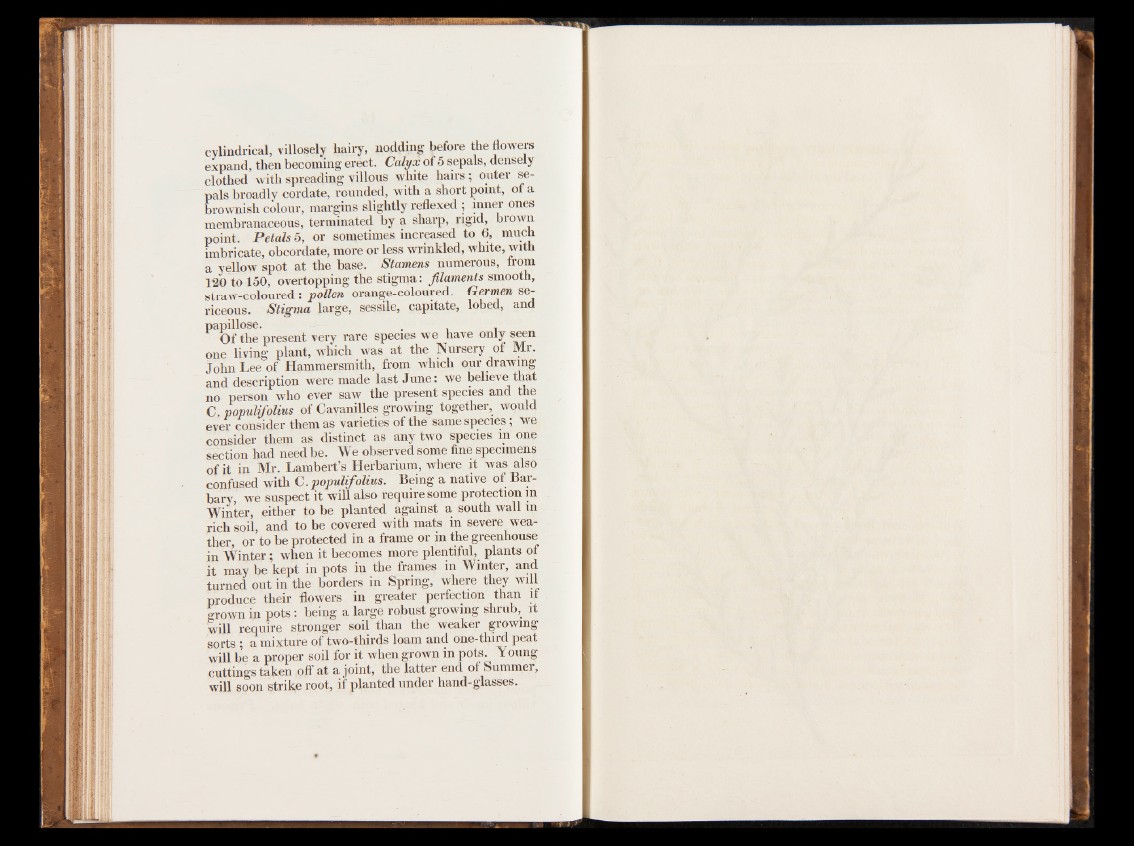
cylindrical, villosely hairy, nodding before the flowers
expand, then becoming erect. Calyx of 5 sepals, densely
clothed with spreading villous white hairs; outer sepals
broadly cordate, rounded, with a short point, of a
brownish colour, margins slightly reflexed ; inner ones
membranaceous, terminated by a sharp, rigid, brown
point. Petals 5, or sometimes increased to 6, much
imbricate, obcordate, more or less wrinkled, white, with
a yellow spot at the base. Stamens numerous, from
120 to 150, overtopping the stigma: filaments smooth,
straw-coloured : pollen orange-coloured. Germen sericeous.
Stigma large, sessile, capitate, lobed, and
papillose. .
Of the present very rare species we have only seen
one living plant, which was at the Nursery of Mr.
John Lee of Hammersmith, from which our drawing
and description were made last June: we believe that
no person who ever saw the present species and the
C populifolius of Cavanilles growing together, would
ever consider them as varieties of the same species ; we
consider them as distinct as any two species m one
section had need be. We observed some fine specimens
of it in Mr. Lambert’s Herbarium, where it was also
confused with C. populifolius. Being a native of Barbary,
we suspect it will also require some protection m
Winter, either to be planted against a south wall in
rich soil, and to be covered with mats in severe weather,
or to be protected in a frame or in the greenhouse
in Winter; when it becomes more plentiful, plants of
it may be kept in pots in the frames in Winter, and
turned out in the borders in Spring, where they will
produce their flowers in greater perfection than if
grown in pots: being a large robust growing shrub, it
will require stronger soil than the weaker growing
sorts ; a mixture of two-thirds loam and one-third peat
will be a proper soil for it when grown in pots. Young-
cuttings taken off at a joint, the latter end of Summer,
will soon strike root, if planted under hand-glasses.